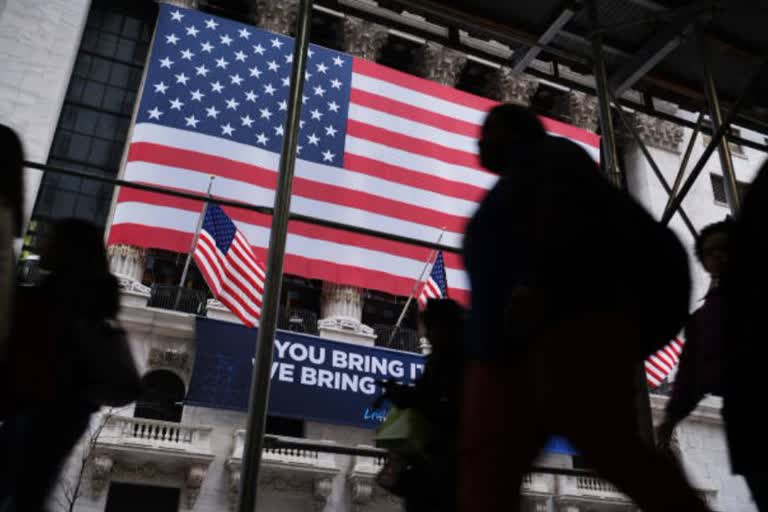Hyderabad: Just when the world economy was picking up the pieces after the Coronavirus outbreak earlier this year stalled growth across countries, fears of another wave of slowdown have hit policymakers globally.
Recently, economists warned that the resurgence of Covid-19 cases across the US is raising the risk of a double-dip recession in the country.
Moody’s Analytics chief economist Mark Zandi said in a note: “The overly rapid business reopenings, combined with the chaotic management of the healthcare crisis, has reignited the pandemic… A growing list of states are rolling back their reopenings, and others have paused theirs. The economic damage is already becoming clear.”
Economists at IHS Markit also wrote in a recent report that the recent rise in infection rates in large countries like the US, India and Brazil underlines the fragility of the rebound. “The new wave of infections has reduced the probability of a V-shaped cycle, something to which we did not subscribe, and increased the risk of a double-dip recession (W-shaped cycle),” the report said, adding a second downturn could arrive in late 2020 or early 2021.
What is a double-dip recession?
A double-dip recession refers to a situation when an economy sinks into recession and then recovers for a very brief period of time before slipping into another recession. It is also called a W-shaped cycle as the shape of the economic data (gross domestic product, or GDP figures) when seen on a graph gives a ‘down-up, down-up’ pattern that resembles the alphabet W.
Read more:Necessary to implement MGNREGA, NYAY; will boost economy: Rahul Gandhi
The US had last seen double-dip recession early 1980s. The US GDP shrank at an 8% annual rate from April to June of 1980. A quick period of growth followed when the economy grew at an annual rate of a little over 8% in the first three months of 1981. The economy then fell back into recession again from July 1981 to November 1982, after which it started registering strong growth period during the rest of the decade.
Why economies fall in double-dip recession?
Economic conditions like high unemployment, debt crisis, high commodity prices and, most essentially, poor consumer spending can cause a hindrance in consistent recovery of a country’s GDP. An overall slowdown in demand for goods and services due to layoffs and spending cutbacks from the previous downturn is generally responsible for the W-shaped cycle.
Zandi noted some of these conditions emerging in the US. He said in his note: “Initial claims for unemployment insurance, which fell sharply from mid-April to early June, have been stuck at over 2 million per week. With hiring now slowing as businesses are required to close again, or at least impose tighter social distancing, it is increasingly likely that the layoffs will overwhelm the hiring, and there will be more job losses… probably not in July, but later this summer.”
Why do economists fear double-dip recession?
A double-dip recession, or W-shaped recovery, is not considered an ideal recovery path by economists. In fact, some argue that it is one of the worst forms of recovery as there are higher risks of the economy moving back into a deeper and longer recession, making the next recovery cycle even more difficult.
Renowned emerging markets investor Mark Mobius said that while he believes the unprecedented monetary and fiscal stimulus by the US government can set the stage for a bullish environment, investors will not be able to shrug off the “ugly economic news and inevitable earnings in the following quarters”.
He said: “A lot of the damage that’s being done to balance sheets, to sales, to profitability, etc., has not really been realized yet.”
(ETV Bharat Report)



